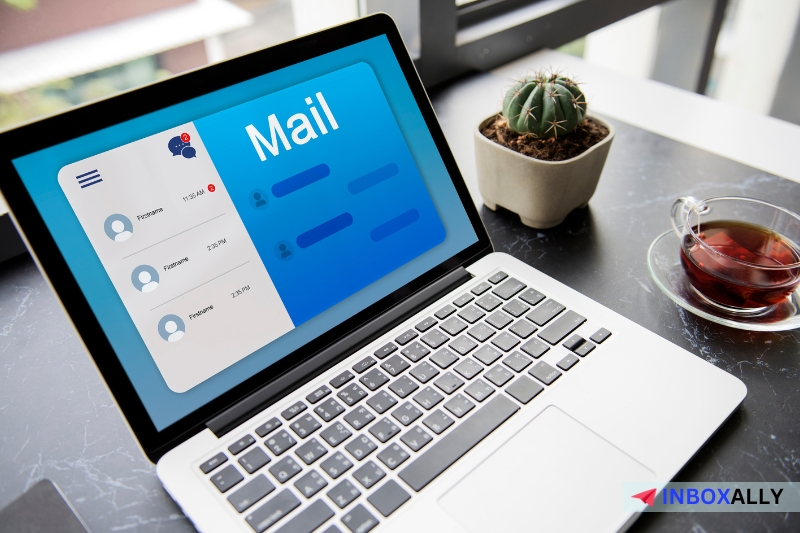As an email marketer or a small business owner, Gmail is probably one of your most commonly used email service providers for marketing and client communications. However, you can sometimes encounter Gmail error messages or be flagged for spam if you don’t know the sending limits of your Gmail account. This is especially true if you’re actively sending bulk emails on the platform.
In this article, we’ll review Gmail’s email sending limit and how many recipients you could include in each email. We’ll also go over the issues you might face when exceeding a Gmail limit and some Gmail bulk sending tips you can follow.
Read on to know more.
How Many Recipients Does Gmail Allow?
To prevent spam and avoid problems in Gmail’s servers, Gmail restricts outgoing emails and the recipients you can include in each email message. This is different from Gmail’s daily sending limit, which we will discuss later:
Maximum Number of Recipients Per Message
These are the maximum number of recipients you can include in your email’s ‘To’, ‘Cc’ (carbon copy), and ‘Bcc’ (blind carbon copy) fields. The limit can vary depending if the recipient’s email address belongs to your organization or is considered as an external recipient:
- A free Gmail account will only allow you to include 100 email addresses on each email.
- Paid Google Workspace accounts allow up to 2,000 recipients total per message, with 500 maximum external recipients. For instance, if you’re sending mass emails, you can message up to 1,500 emails within your domain and 500 clients, suppliers, and vendors.
- Google Workspace trial users can only send up to 500 recipients until they convert to a paid account and comply with a 60-day waiting period.
Maximum Number of Recipients Daily
This counts your total email recipients each day for all emails sent through your Gmail account. Gmail has a different limit when you’re sending to external recipients. They also have a detailed limit on how many unique recipients you can reach daily.
Here’s the general daily limit for the total recipients you can reach on a Google Workspace and standard Gmail accounts:
- A Standard Gmail account allows you to send to 100 recipients daily. This is the same for Google Workspace trial accounts.
- A paid Google Workspace account lets you send to 10,000 recipients daily and 1,500 for mail merge (formerly multi-send).
- Email messages sent via a Simple Mail Transfer Protocol (SMTP) provider or Gmail API can only contain up to 500 recipients.
- Emails sent via Google Workspace Sync for Microsoft Outlook (GWSMO) can only contain 100 recipients.
It’s important to know that Gmail counts every recipient as one for sent messages, even if you send to the same recipient multiple times. For example, if you send 300 emails to four different recipients, Gmail would count it as 1,200 recipients.
External Recipients
Gmail also limits the number of external recipients you can reach daily:
- Regular Gmail accounts can only send to 500 external recipients per day. Similar for Google Workspace trial users.
- Google Workspace users can send to 3,000 external recipients.
Unique Recipients
Gmail counts each unique recipient only once per day. For example, sending to the same email address will only count as one unique recipient. However, emailing two different email addresses (e.g., emails with different usernames) will count as two unique recipients:
- A standard Gmail account can only reach 500 unique emails per day.
- A premium Google Workspace account can send to 3,000 unique recipients daily and 2,000 to external receivers.
What are Gmail Sending Limits?
Similar to their recipient limits, sending limits in Gmail will differ depending on whether you have a standard Gmail account or a paid one in Google Workspace. Following these sending limits will also benefit you with an excellent sender reputation and better delivery of your mass email campaigns. You can use our free Email Spam Checker to know what it takes to avoid the spam folder.
Maximum Messages Daily
This is the daily sending limit Gmail imposes per user account in 24 hours, regardless of how many recipients are included in each email:
- A standard Gmail account can send up to 500 emails daily, including Google Workspace trial users.
- A premium Google Workspace account will have a limit of up to 2,000 messages per day and 1,500 for mail merge.
The same Gmail sending limits apply if you send emails using the Gmail app in Google Sync mode. If you’re a free Gmail user, you can exceed the 500-daily email limit through Google Groups. However, this is only applicable if you share the same interests with your recipients.
Possible Issues When Exceeding Gmail’s Sending Limits
If you’re sending multiple emails daily, it’s easy to lose count. Going over the Gmail email sending limit will put your account in two main types of restrictions:
#1. Account Suspension
According to Google, if Gmail users reach any email sending or recipient limit, they will be unable to send new messages for up to 24 hours. You may also receive this type of error message:
“550 5.4.5 Daily sending quota exceeded. Your message could not be sent…”
It’s important to know that this suspension only restricts you from sending emails, and you will still be able to receive inbound messages and have account access. However, constantly violating sending limits in Gmail will get your account flagged for spam or receive a permanent ban from the platform.
#2. Error Messages
Another problem you might face when attempting to bypass Gmail’s sending limits is error messages. These can include various errors, including “550 permanent spam” messages. Here are a few examples:
“550 5.3.4 Daily sending quota exceeded”
“554 5.7.0 Your message could not be sent…”
To fix this, you must wait until the 24-hour rolling limit resets. While these errors only serve as warnings, getting your account error-prone will result in a temporary account suspension and decreased email limits.
Three Effective Tips for Sending Bulk Emails in Gmail
As an email marketer on Gmail, you might wonder how to increase your email sending limit on the platform to carry out your cold email campaigns more efficiently and avoid suspensions. Here are some tips that you can follow:
#1. Warm-Up Your Email Account
When you’re using Gmail or Google Workspace for your bulk email campaigns, getting your account warmed up is essential for building a positive sender reputation. Following an effective email ramp-up schedule and using a reputable email deliverability tool can significantly help with landing your emails in the primary inbox.
Note: Say Goodbye to Lengthy Warm-Up Periods! With InboxAlly’s advanced email warm-up service, you can efficiently ramp up your email volume while keeping your accounts safe. Our seed emails provide the necessary engagement to boost your reputation, reducing the warm-up time significantly. Start your journey to higher open rates today with InboxAlly!
#2. Utilize Different Email Accounts
To avoid delaying your email campaigns due to limited Gmail sending limits, you can spread your bulk emails to different Gmail accounts. However, it’s still important to follow the limits on each account and avoid sending too much mail to avoid being flagged for spam.
#3. Use an SMTP Service
Instead of sending your emails through Gmail’s servers, you can set up an SMTP relay service with better sending limits than Gmail. This way, you could send more emails daily without worrying about restrictions or errors.
Final Thoughts
Knowing Gmail’s sending limits is critical in seamlessly delivering your emails to your target recipients. However, it’s easy to lose track of your daily sending limit, which can result in blocked emails and account restrictions. To make bulk email sending more efficient, you can use an SMTP service, warm up your email account, and use different Gmail accounts.
Additionally, you can use an email deliverability tool, like InboxAlly, to monitor your email campaign’s performance. Our platform lets you monitor key email campaign metrics through detailed reports and analytics, providing the information you need to improve your email outreach.
Experience Faster Results with InboxAlly! In as little as two weeks, you can see a dramatic improvement in your email deliverability and open rates. Some clients even report doubling their open rates within this period. Start using InboxAlly today and watch your email campaigns thrive with better engagement and revenue!



